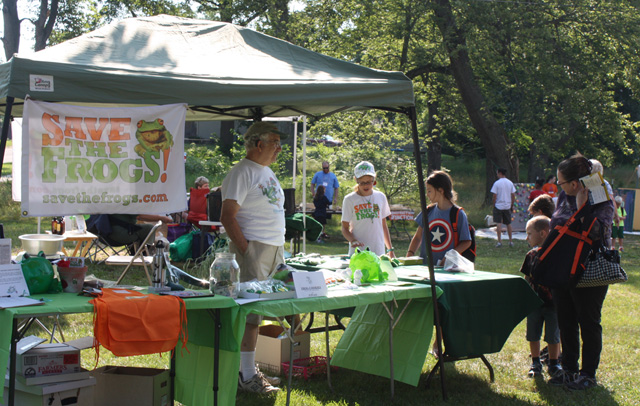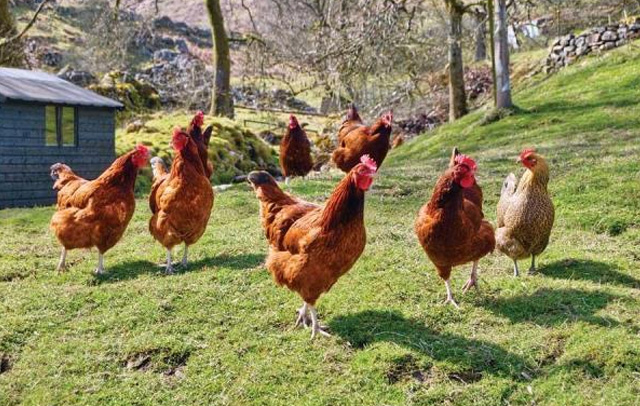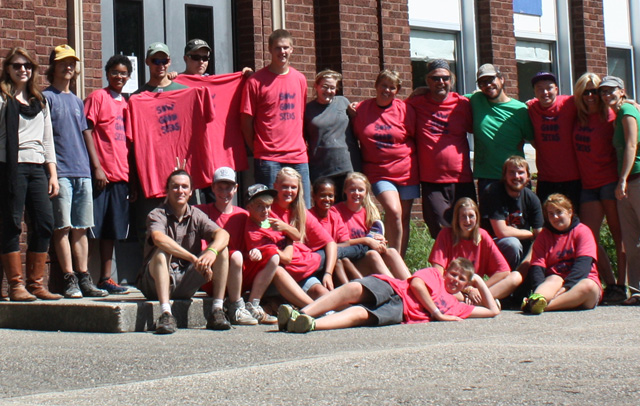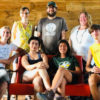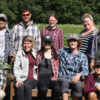The Save the Frogs tent at Huss Future Festival on July 19, 2014.
Our continuing exploration of *cino’s core values took us to a discussion of creative collaboration during our weekly Garden of your Mind session. Our text for the dialogue came from Community: The Structure of Belonging by Peter Block. The book opens with the following statement about community:
The essential challenge is to transform the isolation and self-interest within our communities into connectedness and caring for the whole. The key is to identfy how this transformation occurs. We begin by shifting our attention from the problems of community to the possibility of community. We also need to acknowledge that our wisdom about individual transformation is not enough when it comes to community transformation. So, one purpose here is to bring together our knowledge about the nature of collective transformation.
Huss Future Festival is a prime example of the value of creative collaboration at work within *cino activities. Future Fest brings together numerous organizations and individuals from around the Three Rivers area, from organizations that participate in the coin carnival to artists selling wares, from local folks working on frog extinction issues to Speaking Stone Cafe, and, this year, working alongside the Three Rivers Area Faith Community (TRAFC) for their Back-to-School backpack distribution. Each of these entities brings something unique to the event that otherwise would be absent, and together we are able to create something greater than the sum of its parts.
That is one of our small offerings towards the collective transformation of the Three Rivers community we seek to be a part of. Our own *cino community has individually made commitments towards a certain kind of life, but we recognize that those decisions alone do not add up to community transformation. For that, creative collaboration is an absolutely essential component. Sometimes collaboration requires the type of creativity that figures out ways to bridge the gap — what Block refers to as bridging capital — between parties who disagree. That is the sort of creativity that breaks down barriers pushes through stalemates, and that is the sort of collaboration that can change the world.

